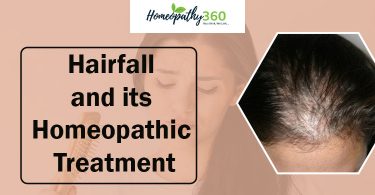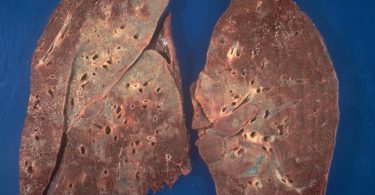
ABSTRACT: Warts are the growth of skin resulting from human papillomavirus infection. These may be single, multiple, smooth, or cauliflower- like growth. In such cases homoeopathic medicines are always beneficial when given after individualization of the patient and prescribed medicine must be similimum in order to cure the patient.
KEY WORDS: Wart, Homeopathy, Medicines.
INTRODUCTION: Viral Warts also called verrucae are common and benign cutaneous tumours due to infection of epidermal cells. Caused by human papilloma virus.[1]
Predisposing factor: Transmitted by direct contact with the virus in either living skin or shed skin fragments.[2] The virus infects by direct inoculation and is caught by touch sexual contact or at the swimming baths.[1]
Clinical presentation: Clinically they present variously depending on the site involved.[3]
Certain clinical patterns are well recognized: [1]
- Common warts: These present as dome-shaped papules or nodules with a papilliferous surface. They are usually multiple, and commonest side are on the hands or feets in children but also affect the face and genitalia. Their surface interrupts skin lines. [1]
- Filiform warts: Lesions on the neck are often (filiform warts) pedunculated [3]with fine digit-like projections. [1]
- Plane warts: These are flat topped, smooth, skin coloured or slightly dark, usually present on the face in children. Lesions arranged along scratch lines, if present, help in diagnosis[3] These are smooth flat-topped papules, often slightly brown in colour, and commonest on the face and dorsal aspects of the hands. They are usually multiple and resist treatment, but eventually resolve spontaneously, often after becoming inflamed. [1]
- Plantar warts: These are characterized by a horny collar surrounding a roughened surface. [2] These are seen in children and adolescents on the soles of the feet; pressure causes them to grow into the dermis. They are painful and covered by callus, which, when pared, reveals dark punctate spots (thrombosed capillaries). [1]
- Mosaic warts: Mosaic-like sheets of warts. [2] Warts are plaques on the soles which comprise multiple individual warts[1].
- Genital warts: In males these affect the penis, and in homosexuals, the perianal area. In females, the vulva, perineum and vagina may be involved. The warts may be small, or may coalesce into large cauliflower-like ‘condylomata acuminata’.
Differential diagnosis and complications: The diagnosis of viral warts is usually obvious. Occasionally, corns on the sole or hand, or molluscum contagiosum elsewhere, are confused. With viral warts, under the fingernails and toenails, it is important to consider amelanotic malignant melanoma, periungual fibroma and bony subungual exostosis
HOMOEOPATHIC TREATMENT OF WARTS4,5
- Calcarea Carbonica–Warts on face, neck and upper exterimities, acritical exertion on cutis on scrofulous, chlorotic, hydrogenoid patients, especially youthful ones.
- Causticum–Old warts on nose and eyebrows, on face, nails and fleshy tips of fingers.
- Dulcamara-Warts on face and hands, smooth, sometimes nearly transparent, coming in a crop.
- Lycopodium-Split and furrowed warts, surrounded by a herpaticaureola, with branlike desquamation.
- Natrum Muriaticum-Old warts with cutting pains; numerous warts on hands and fingers in anaemic, chlorotic girls with pale, scanty, irregular menstruation, gastralgia, constipation, or for the anaemic nervous palpitations of overgrowns boys with numerous warts on hands.
- Natrum Sulphuricum– Knotty, wart like eruption on anus, between abdomen and thighs; red warty lumps all over body.
- Nitric Acid–Moist warts, like cauliflower, hard, rgagadic, or in thin pellicles, often emitting a foetid humor and bleeding when touched.
- Rhus Toxicodendron-Warts on fingers and hands with a board, flushy face , upper part horny, rough, knotty, with a thickened epidermis, not sensitive, forming a grayor black crust and finally shrinking to a brown, hard crust, which falls off and healthy skin is underneath.
- Sepia-Horny excrescences in centre; small, flat, hard and itching warts on hands and face.
- Thuja-Board, conical warts, easily splitting from their age on their surface; condylomata, sycosis.
- Sabina-Fig warts, with intolerable itching and burning. Exuberantgranulations. Warts. black pores in skin.
- Castor Equi –Warts on forehead and breast.
- Cinnabaris-Prepuce swollen; warts on it which bleed easily. Buboes, condyloma, easily bleeding.
- Calendula Officinalis-Warts at the os externum.
- Antimonium Tarticum-Warts on glans penis.
- Berberis Vulgaris–Flat warts. Itching, burning and smarting worse, scratching; better, cold application.
- Anagallis Arvensis-Great itching and tingling everywhere in skin. Posseses power of softening skin and destroying warts.
- Sempervivum Tectorum– Erysepelatous affections. Warts and corns. Aphthae. Flushed surface and stinging pain.
- Medorrhinum–Sycotic warts on the genitals. Worse heat better damp weather.
REFERENCES:
- Gawkrodger D J. Jones M R J. Dermatology An Illustrated Colour text. 3rd ed. China: Churchill Livingstone An imprint of Elsevier Limited; 2003.
- Innes J A. Davidson’s essentials of medicine. London; Churchill Livingstone; 2nd edition; 2016.
- Munjal Y P. Api Textbook Of Medicine. Jaypee Brothers Medical Publishers Private Limited; 9th Edition.
- Lilienthal S. (2005). Homoeopathic Therapeutics (Large Print ed.). B Jain Pub Pvt Ltd.
- Boericke William: Pocket Manual of Homoeopathic Materia Medica and Repertory. Reprint Edition 2004. New Delhi. B.Jain Publisher Pvt.Ltd .Page no.75, 103,386,410,520,415,548.
About Author:
Dr. Pradeep Kumar1, Dr. Sandhya2, Dr. Yasha Soni3
- PG scholar Department of Organon of Medicine, Dr. M.P.K. Homoeopathic Medical College Hospital and Research Centre, Jaipur (Raj.)
- PG scholar Department of Paediatrics, Dr. M.P.K. Homoeopathic Medical College Hospital and Research Centre, Jaipur (Raj.)
- PG scholar Department of Materia Medica, Dr. M.P.K. Homoeopathic Medical College Hospital and Research Centre, Jaipur (Raj.)





